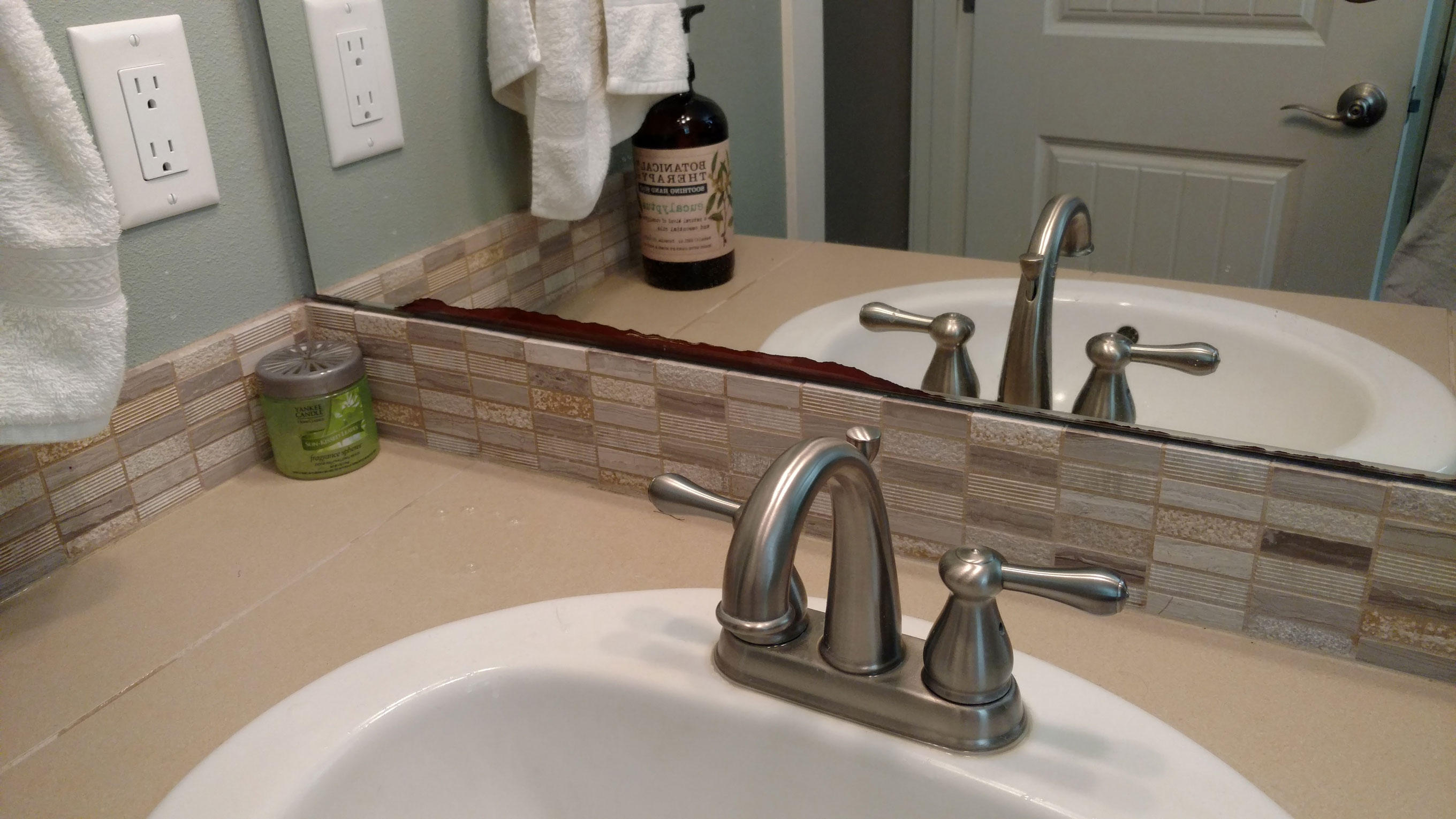
Mirrors are made by applying a thin layer of tin and silver to the back of a clear glass sheet, which creates the reflective surface, and then one or more layers of paint are applied to protect the metals.
Black edges on mirrors are caused by moisture or harsh chemicals attacking the reflective silver on the back of a mirror. The most common place you will see black edges on mirrors is in bathrooms or mirrors near sinks, and usually at the bottom of the mirror. This is where the condensation is most likely to collect and attack the backing of the mirror.
Top Shelf applies a seal on the edges of all mirrors we install. The product we use is called CRL Gunther Seal-Kwik Mirror Edge Sealant. After cutting the mirror to the desired shape and polishing the edges, our technicians apply the sealer around the complete perimeter of the mirror. This helps prevent black edge from occurring, but will not stop it entirely if the mirror is not protected from exposure to moisture and chemicals.
The following tips will help prevent black edge:
- Never use ammonia based cleaners on mirrors. A great product we use and recommend is Sprayway. You can find Sprayway at Home Depot or most hardware stores.
- Never allow condensation to build up on a mirror. Always run the bathroom exhaust fan during a shower and for 30 minutes after the shower. To make sure your fan is pulling air you can place a thin sheet of paper up to the fan and it should hold it tight. If you can see condensation on the mirror, your ventilation is not adequate. This condensation will collect on the edges of the mirror and start the rusting/black edge process.
- When water is splashed on the mirror during hand washing, dry the water from the mirror immediately.
